How luthier Roger Rossmeisl shaped the look of Rickenbacker guitars with the legendary Capri series
Rickenbacker author Martin Kelly unpacks Rossmeisl’s crowning achievement
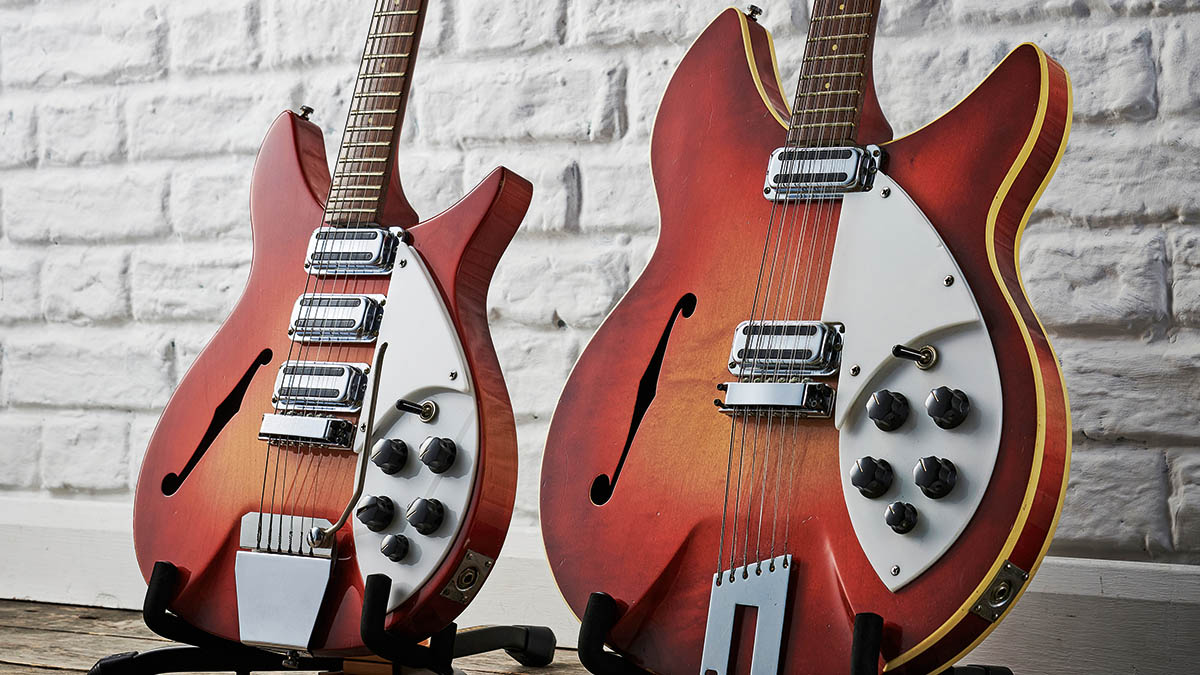
Rickenbacker holds a unique seat in the pantheon of great American guitar builders. It was the first to introduce the electric guitar concept by taking it to market in 1932 following the development of the horseshoe pickup the previous year.
By the late 1950s Rickenbacker’s new owner FC Hall was keen to break into the thinline semi-acoustic market and would launch a series of guitars that have endured for more than six decades.
Known as the Capri, this iconic design was a marvel of guitar craftsmanship when it arrived in January 1958. Furthermore, by a bizarre twist of fate, the very first Capri ever made – serial number V81 – ended up in the hands of John Lennon in 1960, directly changing the course of popular culture as a consequence.
It’s a strange tale that bounces back and forth across the pond. Boiled down, it simply goes like this: a German-born luthier by the name of Roger Rossmeisl (1927-1979) emigrates to America, teams up with Rickenbacker in California then designs a new style of electric guitar.
The very first one he makes ends up being shipped back to his homeland where a young John Lennon finds it for sale in a Hamburg music store. Lennon buys this now historic Capri – a 325 model – and within a few years the world is gripped by Beatlemania.
Subsequently, demand for Rickenbackers explodes. Augmented by a plethora of British invasion bands toting Rose Morris-imported Capris, Rickenbacker’s place in history is well and truly cemented. But who was Roger Rossmeisl and how did this all begin?
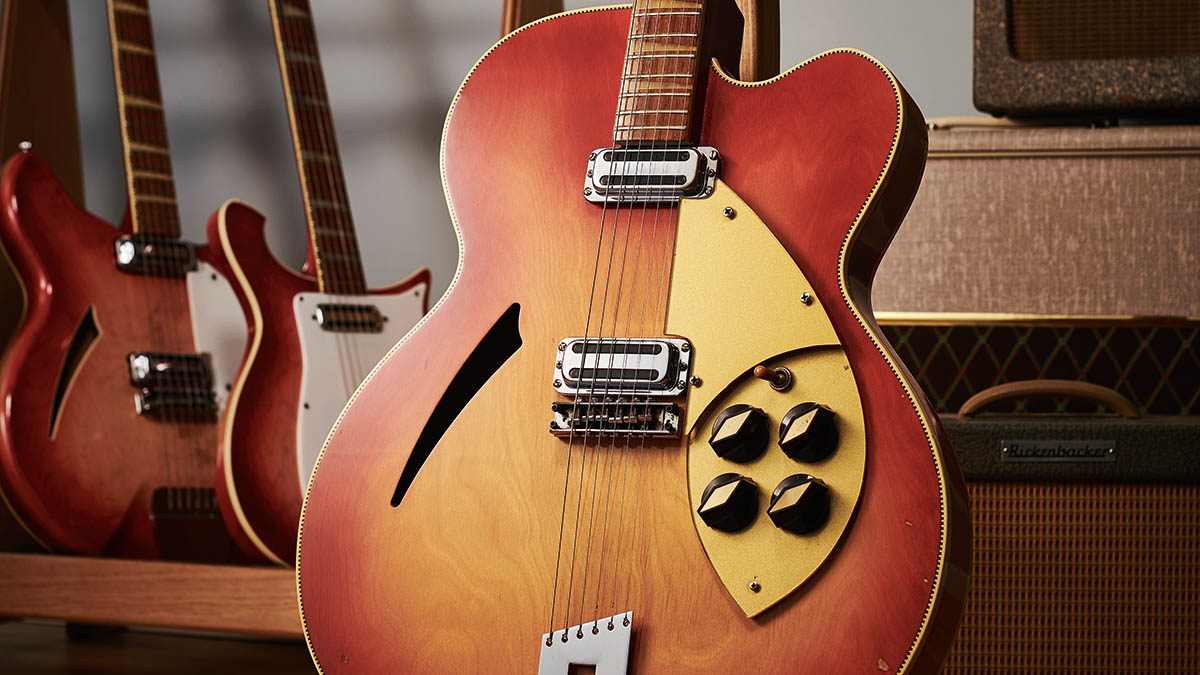
“Roger Rossmeisl was born in Germany where his father, Wenzel, a jazz musician, was making guitars throughout the 1930s,” begins Martin Kelly, whose new Rickenbacker book – crammed with incredible photography courtesy of his brother, Paul Kelly – has recently set the guitar world alight with its definitive account of the company’s colourful history.
Get The Pick Newsletter
All the latest guitar news, interviews, lessons, reviews, deals and more, direct to your inbox!
“During the war, Roger was sent to safety in Schönbach, Austria, where, between the age of 12 and 18, he learned the art of guitar making under the tutelage of a guy called Franz Hirsch.
“He returned, fully trained, to Berlin after the war and set up shop working alongside his father making jazz guitars under the Roger brand. They were producing beautifully made guitars, but in post-war Germany materials were in desperately short supply and it wasn’t long before Wenzel was caught smuggling materials in from the communist-controlled East. He was sentenced to four years in prison and Roger was left holding the baby.
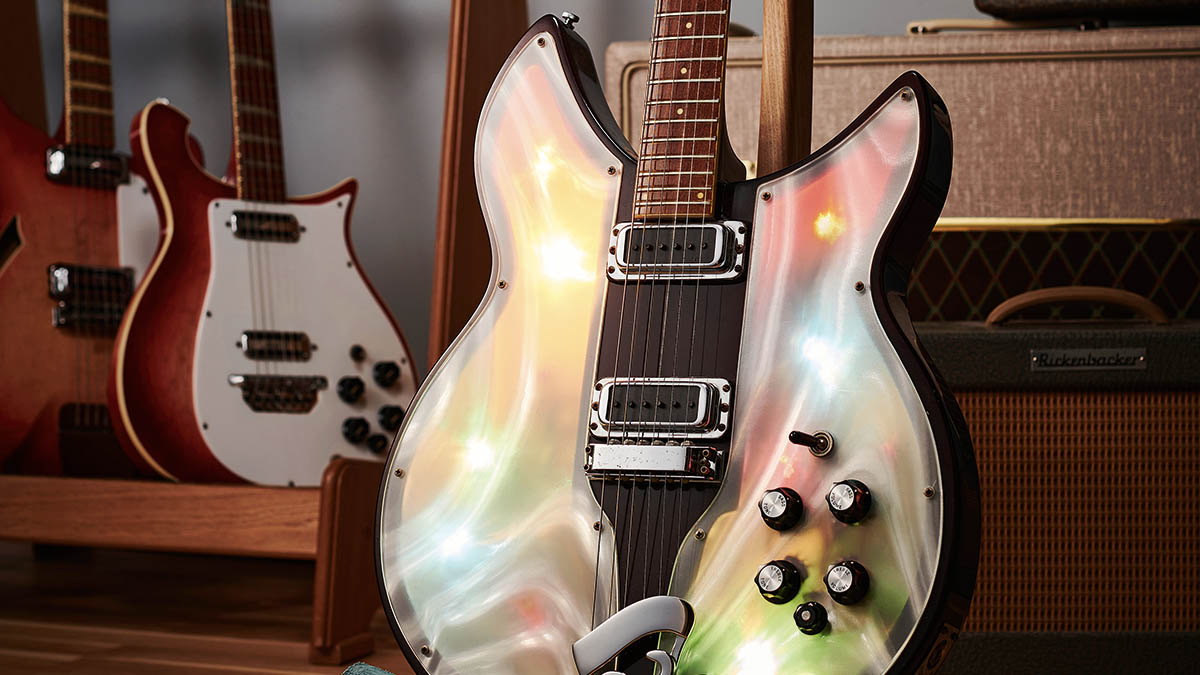
“After a couple of years running the company alone, Roger hit money problems and wrote to Gibson in Kalamazoo, where [company president] Ted McCarty offered him a job, so [in 1953] he packed up shop and emigrated to the US. Unfortunately, things didn’t work out at Gibson.
“Ted was less than impressed with an acoustic guitar Roger built, which had a thick carved top, and there was still a lot of anti-German feeling among some of the staff during the post-war years.
“So Roger split for sunnier climes and a stint playing Hawaiian guitar on a cruise ship on the West Coast, eventually ending up in Los Angeles where he landed a job at Rickenbacker [in early ’54]. I don’t doubt he’d knocked on Leo Fender’s door as well, but it was Rickenbacker who gave him his first real break.”
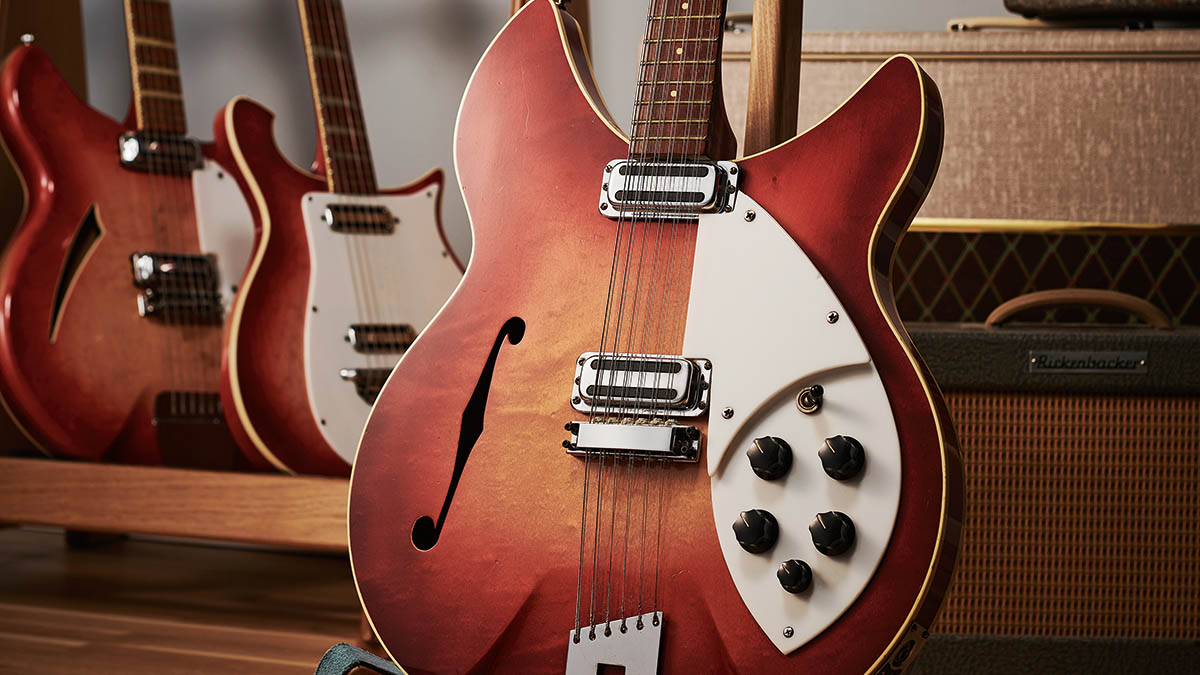
Indeed, Rossmeisl eventually joined Fender in 1962 where he would go on to develop several new guitar designs, beginning with its first foray into acoustics (“Very underrated guitars!” Martin tells us).
However, his most enduring contribution to the Fullerton firm’s catalogue is the Thinline Telecaster released in ’68 – a design that evolved directly from his earlier efforts at Rickenbacker.
“The Capri design is essentially a solidbody hollowed out from the rear with the back glued on, very much like the Telecaster Thinline,” Martin says. “In fact, the Telecaster Thinline is very much a Rickenbacker made by Fender – because that’s what Roger went over there and did!
“The Thinline and Fender Coronado – also designed by Rossmeisl – even sport the same stylised f-holes seen on Roger guitars from the ’40s right through to Rose Morris Rickenbackers. It’s Roger Rossmeisl all the way. Roger has given so much to the guitar world that people take for granted. And there’s probably more we don’t know about.”
At this point in the story, it must be pointed out that the Fender-Rickenbacker connection extends further back than Roger Rossmeisl’s appearance.
After Rickenbacker’s co-founder Adolph Rickenbacher made it known to Fender partner FC Hall that he was preparing to retire, the astute businessman bought the firm in December 1953, much to the chagrin of his Fender colleagues. Having been involved with Fender since the mid‑1940s, Hall was ultimately frozen out of the company in 1955.
“FC’s role in Fender had been seriously diluted by 1953 and he clearly wanted something he could call his own,” says Martin. “He definitely had his eyes on the prize. The electric-guitar market was beginning to explode and FC wanted his own piece of the action.”
Having acquired Rickenbacker, FC Hall approached an industrial designer named Hunt Lewis in order to produce a brand-new Spanish-style electric guitar. The instrument’s blueprint is dated April 1954 and depicts a solid construction hollowed out from the front with a glued-on top. This design effectively laid the groundwork for Rossmeisl’s refinements once he came onboard two months later.
“The genesis of the Capri range stems from the early Combo 600 and 800 models designed by Hunt Lewis,” says Martin. “Lewis wasn’t a guitarist and looked at the guitar in the way an industrial designer might. He came up with the idea of making the body from a hollowed-out solid block of wood, something Roger hadn’t previously done.
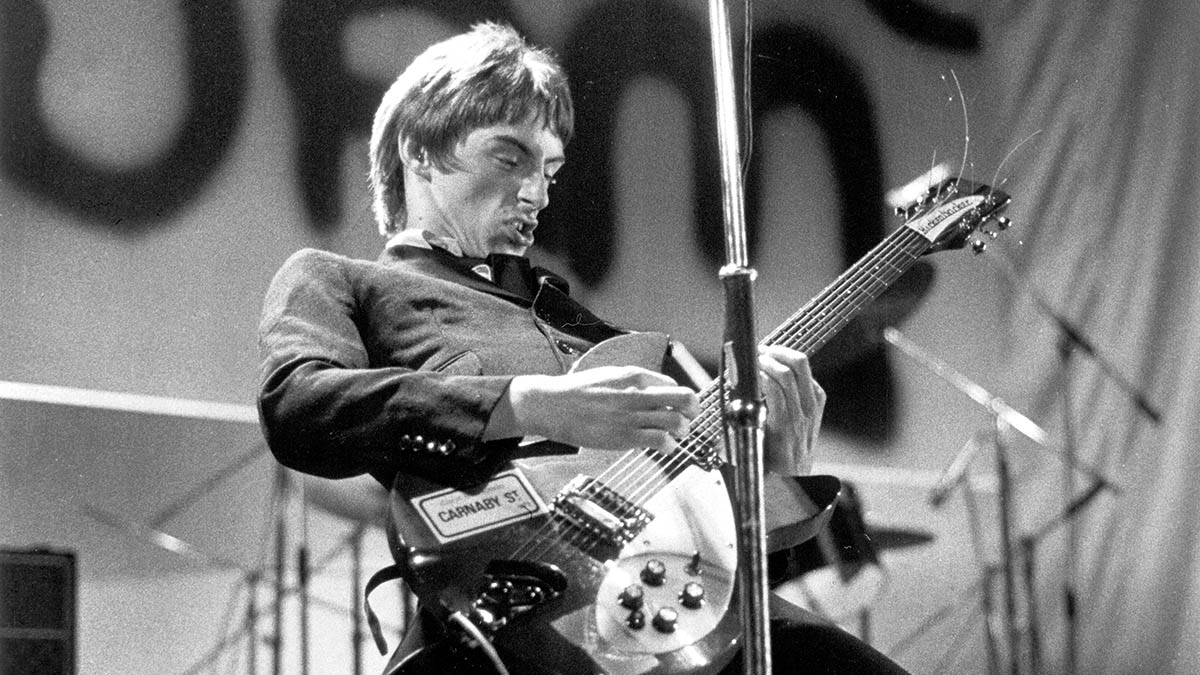
“Hunt’s original design shows the body being hollowed out from the front with a top being glued on. But when Roger arrives a few weeks later he makes changes. For example, he hollows from the reverse side, putting a German carve into the top.
“Roger finesses the design somewhat, he changes the cutaway and the headstock shape, but the principle of taking a solid block and hollowing it out remains. No-one else was making guitars that way. Although you get chambered out bits on a Gretsch or Les Paul, it’s not the same as being completely hollowed out.”
During his first few years at Rickenbacker, Rossmeisl was mostly working to a brief while introducing his own embellishments. Impressed by what he saw, by 1957 FC Hall was urging him to come forward with new designs.
“The Capri series evolved from the Combo series,” says Martin. “The Capris were the first truly semi-acoustic guitars that Roger made with soundholes. He advanced the process to make the guitars super lightweight by taking a lot more wood out. The top and sides are one piece, and he’d hollow right through for the slash/soundhole. Then he’d glue a piece of wood on the back.
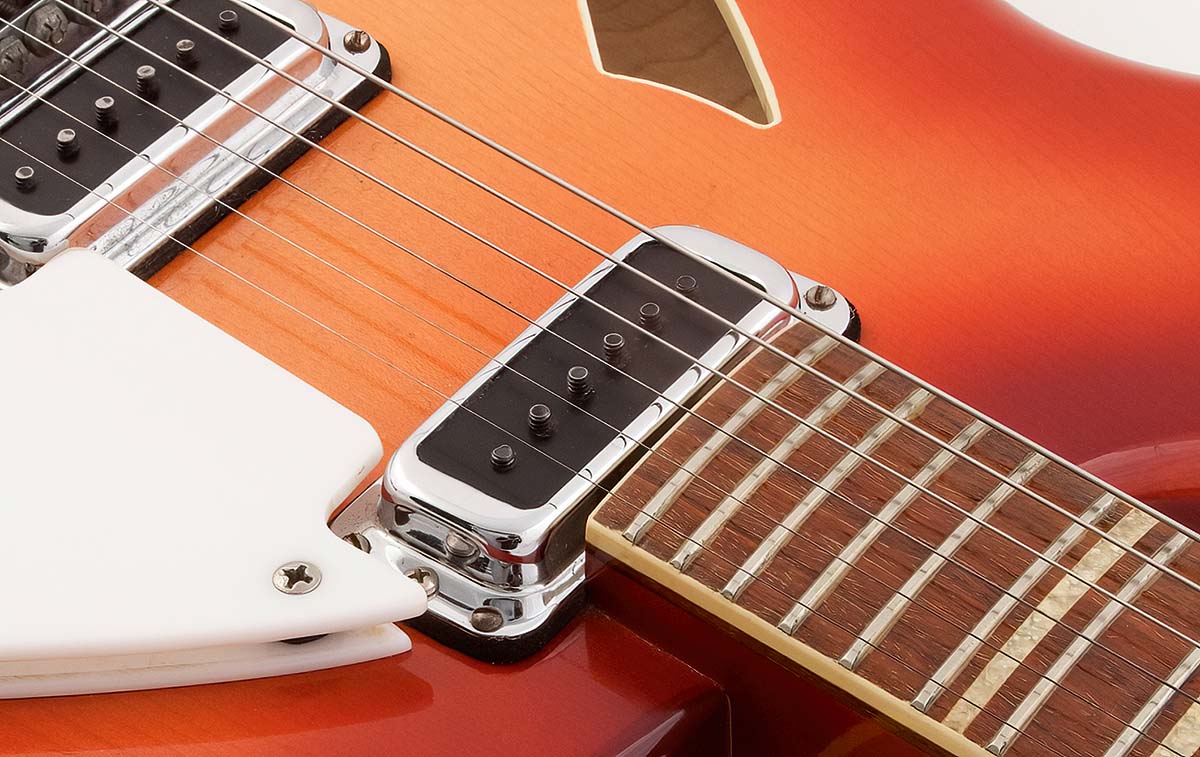
“By 1957, FC was letting Roger off the leash a little and that’s when you really begin to see the flair and flamboyance of his designs. It’s when the company’s brand identity really takes shape.
“You see several ideas creeping in that Roger had developed in Germany – triangular markers, slash (cat’s eye) soundholes, deluxe binding – all these sorts of things that he’d been using before suddenly start coming into the picture.
Strips of contrasting wood not only made the necks stronger but gave them an upmarket appeal
“If you look at late-’40s Roger guitars, you’ll see numerous connections with his Rickenbacker designs. Take the laminated necks, for example – that’s something Roger was doing earlier, which he carried over to Rickenbacker.
“Strips of contrasting wood not only made the necks stronger but gave them an upmarket appeal. There are lots of other details that are similar to Roger guitars, like the fingerboard bindings, ‘R’-tailpieces, headstock shapes… but he refined it all at Rickenbacker.”
Though Roger employed a high level of craftsmanship, the carving of tops was a relatively time-consuming process. Naturally, FC Hall required more turnover.
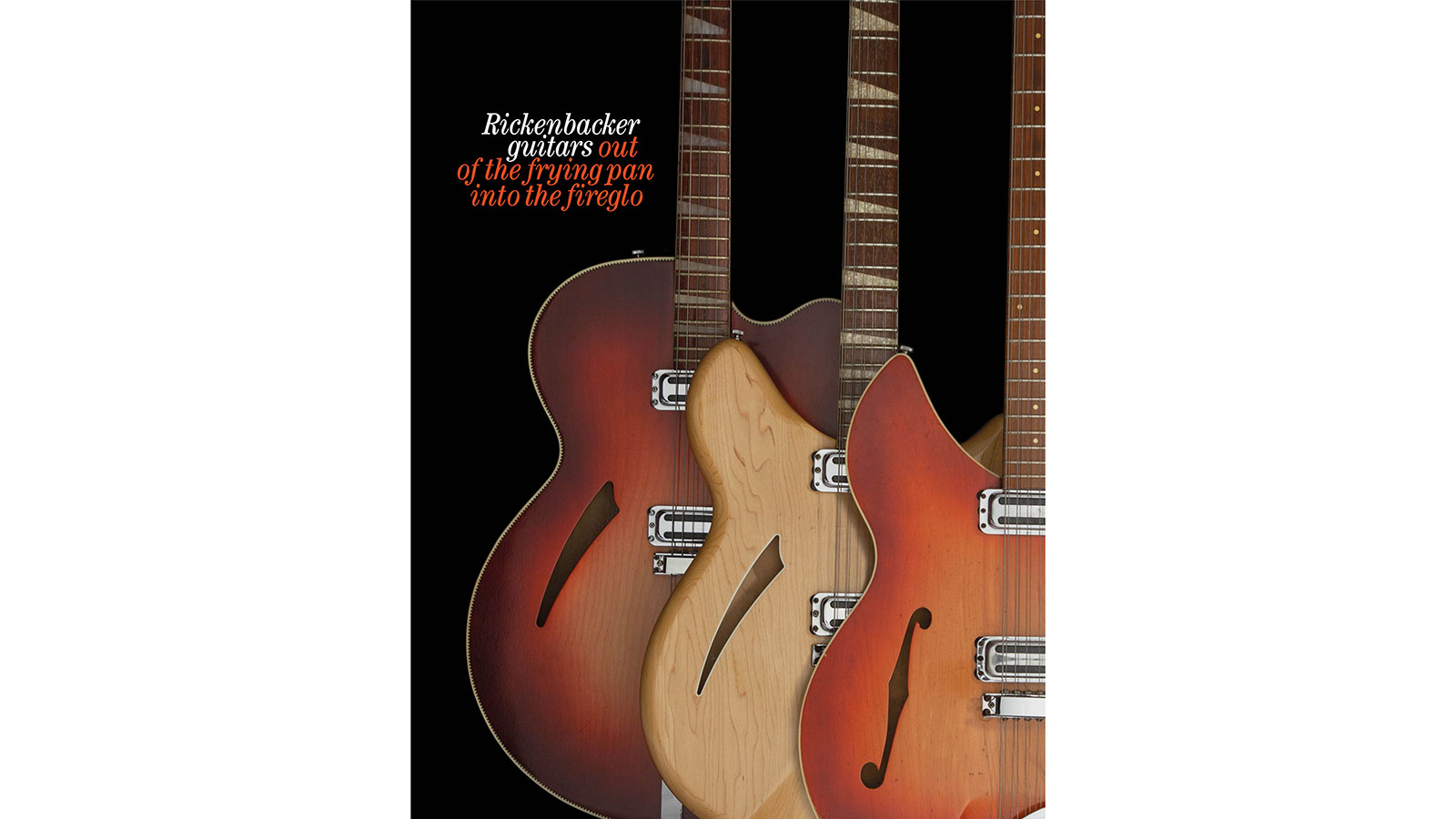
“It was in this moment that things start coming together,” Martin says. “That’s when the Capri range was really born. One of the things Roger had brought over from Germany was carved tops. Most early Combo models featured the German carve; it was not only time-consuming but kept prices higher than the competition.
“FC was clearly requesting to ‘speed production up’ and that’s when you start seeing the flat-top Ricks. The first prototype for the Capri range, known as the Polynesian, did indeed have a carved top, but by the time production commenced and Roger built Lennon’s V81, the carved-top idea had been abandoned and all Rickenbackers from that point, bar a few specials, featured flat tops.
“FC immediately saw the potential of the new range and named it ‘Capri’ in honour of the family cat. There were just six 325s made with solid tops like Lennon’s, but after those first six, Rossmeisl started cutting f-holes into the short-scale Capris.”
Having created the short-scale 325 in January ’58, Rossmeisl continued to evolve the Capri body shape. Via three ‘long body’ prototypes he arrived at the full-scale 300‑series Capri dimensions.
“Roger kind of stretched the dimensions of the 325 body design lengthways then sideways,” says Martin. “That’s how he arrived at the classic late-50s style Capri. In ’61, he redesigned the Capri again, dropping the waist and filling out the body horns. It’s a subtle but very dramatic change. There were hints of it coming, but the Capri range with its extreme cutaway really defined the iconic Rickenbacker look – and the company’s image for decades to come.”
- Rickenbacker Guitars: Out of the Frying Pan Into the Fireglo by Martin Kelly and Paul Kelly is available now via Phantom Books
Rod Brakes is a music journalist with an expertise in guitars. Having spent many years at the coalface as a guitar dealer and tech, Rod's more recent work as a writer covering artists, industry pros and gear includes contributions for leading publications and websites such as Guitarist, Total Guitar, Guitar World, Guitar Player and MusicRadar in addition to specialist music books, blogs and social media. He is also a lifelong musician.
“It holds its own purely as a playable guitar. It’s really cool for the traveling musician – you can bring it on a flight and it fits beneath the seat”: Why Steve Stevens put his name to a foldable guitar
“Finely tuned instruments with effortless playability and one of the best vibratos there is”: PRS Standard 24 Satin and S2 Standard 24 Satin review

![A black-and-white action shot of Sergeant Thunderhoof perform live: [from left] Mark Sayer, Dan Flitcroft, Jim Camp and Josh Gallop](https://cdn.mos.cms.futurecdn.net/am3UhJbsxAE239XRRZ8zC8.jpg)









